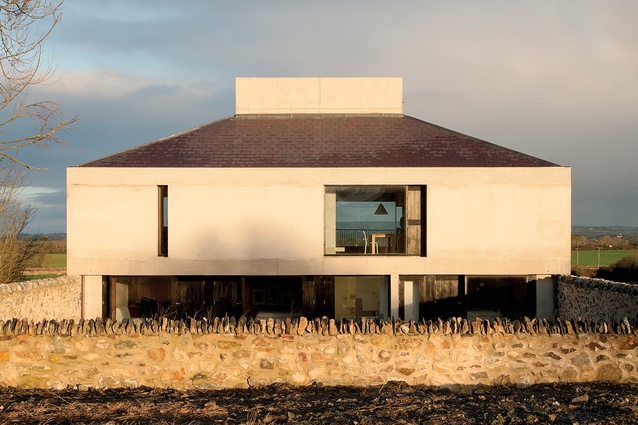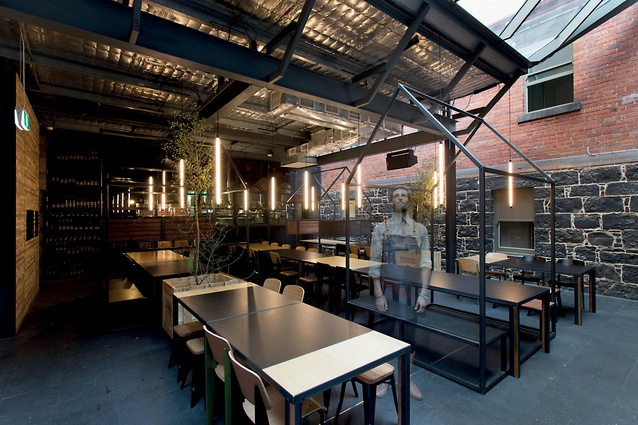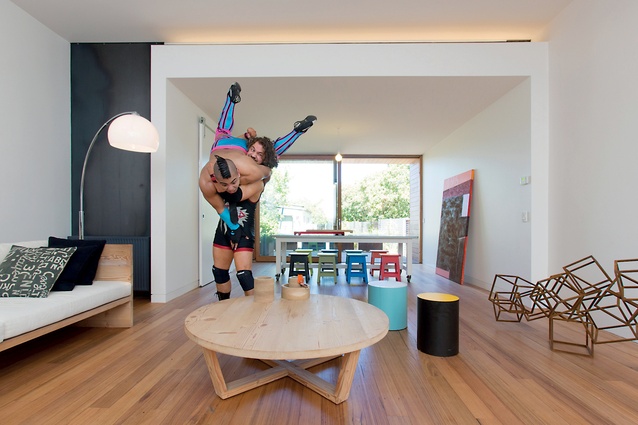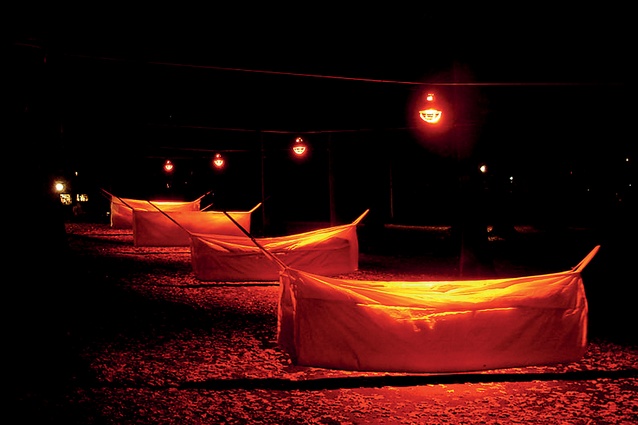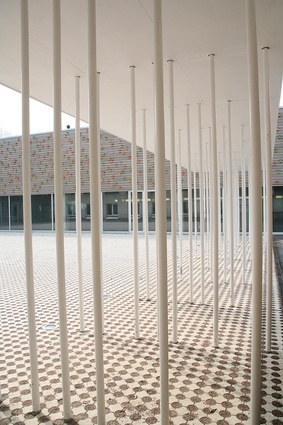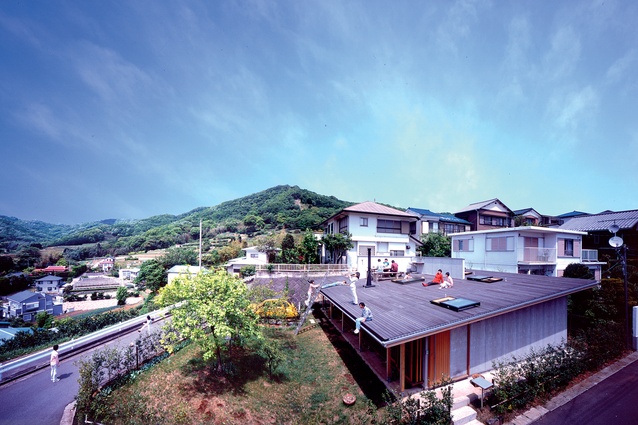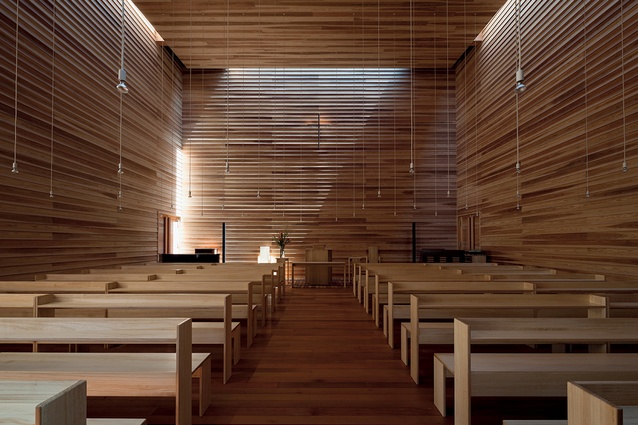2015 Australasian Student Architecture Congress
It started with a beer, as these things quite often do, bundled together in some dusty corner of a bar. Eager and unprepared, we were a team of 25 New Zealand students, across five years, from three architecture schools – The University of Auckland, Unitec and Victoria University of Wellington. It was a Wednesday night and the opening of the 2015 Australasian Student Architecture Congress was a short cobbled walk away at the bottom of town. Some of us were meeting for the first time. We had come to Melbourne lured by tales of congresses past: pneumatic domes in Warkworth; geodesic in Perth; sleepless train rides to Brisbane; and all-day pub crawls in Sydney.
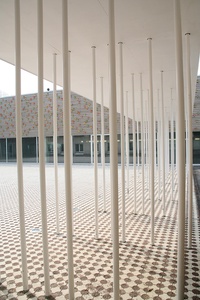
The congress is a biennial gathering, dating back to 1961, which continues to offer a way for students to collaborate, build and scheme about all things architecture. ‘People’, the theme and thread for the 2015 programme, was bound by Markus Jung’s declaration that, “Architecture is not about form but the formations of people”. And, as we greeted each other, we prepared, quietly and ambitiously, to bind ourselves together over three days with reckless expectations, late-night dancing and lofty ideals.
Loosely filing into the Deakin Edge theatre on the first morning, we were accompanied by flat whites, sharpened pencils and an appetite for architecture. Eugenia Lim, artist, author and editor of online publication Assemble, started us off with an inquiry into ‘the culture of living closer together’. A modest but impressive gathering of ways of living within the city offered an anthology of interiors, civic spaces, playlists and even a recipe for French onion soup.
Architect Jeremy McLeod (Breathe Architecture) recounted his most admirable project, The Commons, which offers a new economic model for the architect-developer. Constructed with the collaboration of a handful of other like-minded architects and investors, the multi-unit development cuts out the unnecessary, applying rules like ‘no car parks’ and ‘no suspended ceilings, tiles or second bathrooms’ in order to produce affordable, inner-city apartments.
Auckland architect Julia Stout (Mitchell & Stout) spoke of adventures at sea, her impressive Narrow Neck home and the power of the protest. Steven Larkin (Steve Larkin Architects) composed an acoustic performance of his Irish-based architecture practice and was followed by photographer John Gollings (John Gollings Photography), who shared some secrets and a family album of architects, designers and friends. Sean Godsell confidently closed the day with questions from the crowd, a circular façade and a steel cottage.
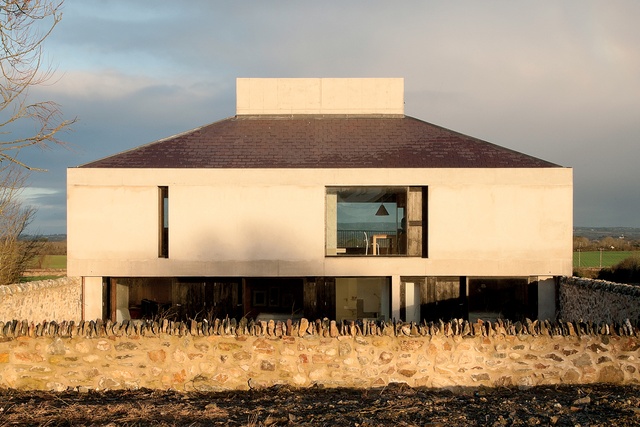
The offerings of day two far from dwindled, with a second location situated a short stroll up from the hostel at RMIT’s Storey Hall. Estonian architect Veronika Valk (ZiZi & YoYo) asked us to “imagine a future that is worth creating” and showcased a series of public installations, projects and collaborative ventures. Sandra Manninger (SPAN del Campo Manninger Architects) spoke about “abandoning the trivialisation of problems” and the importance of being convinced by your own work.
Paul Pholeros (Healthabitat) talked about biogas toilets and Paul Memmott (The University of Queensland) covered his work on the architecture of Aboriginal Australia. Then, the afternoon was split up and consumed by a set of workshops held by local architects in a diverse array of enactments, arguments, site visits and planning. We cooled off with a comedian at Robin Boyd’s South Yarra house, where the comradeship was in full swing.
The University of Melbourne hosted day three with Des Rogers (Aboriginal Housing Victoria), who spoke of a “lack of positive options for Aboriginal housing”, and Anna Rubbo (Center for Sustainable Urban Development) discussing inequality in architecture. It was then up to the students to offer a pitch about hosting the next congress in their respective home towns and to pick the theme. Sydney came out trumps with its proposal ‘Agency’, which seeks to examine the housing affordability crisis and what this means for the members of a young generation who may never be able to buy their own homes; that sounds familiar.
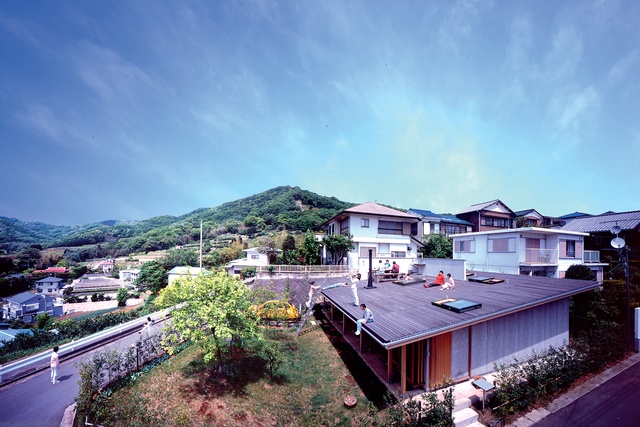
Lucy Humphrey (Archrival) then looked into the productivity of rivalry and design blind spots, while Laurent Gutierrez (MAP Office) suggested that “running remains the only unbounded action in the urban field”. This was followed by the ‘green can architects’ who spoke at NZIA’s national conference earlier this year, Adrian Welke and Phil Harris (TROPPO), who retold their admirable journey with friends. Riccardo Vannucci (FAREstudio) suggested that “everything starts as a prototype”, and was followed by Tone Wheeler (Environa Studio), who diagnosed that “perfect is the enemy of good”.
Takaharu Tezuka (Tezuka Architects) closed up the day and the congress with a reminder that architecture really is about ‘the people’ and about those who occupy it, suggesting that “if you have to explain your architecture, you have been defeated”. The event, of course, closed in the same way it began, except, this time, not only had we met but we had discussed, fought and sealed ourselves as friends in a congress that continues to play its part as a major contribution to our architectural education. We are enormously grateful to the NZIA for its assistance in getting us all there and for its ongoing support of SANNZ.

